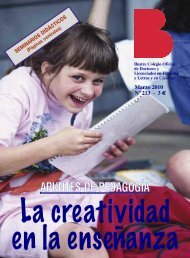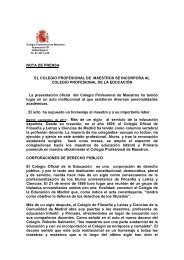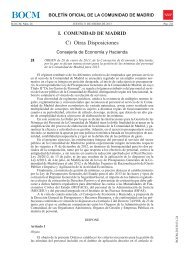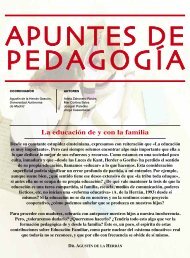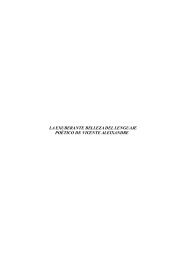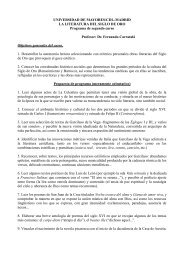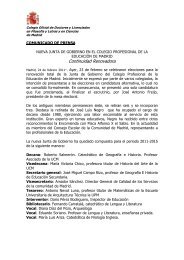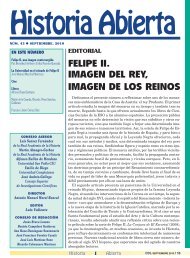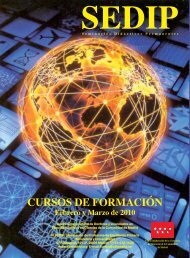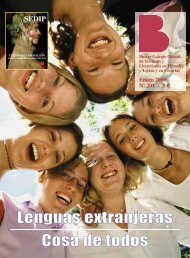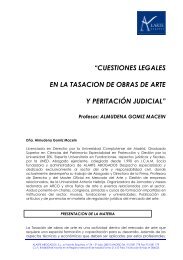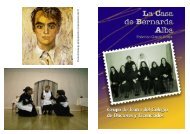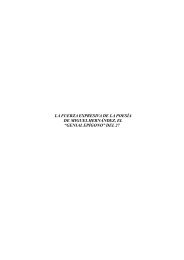The Golden Section and the Piano Sonatas of Mozart John F. Putz ...
The Golden Section and the Piano Sonatas of Mozart John F. Putz ...
The Golden Section and the Piano Sonatas of Mozart John F. Putz ...
You also want an ePaper? Increase the reach of your titles
YUMPU automatically turns print PDFs into web optimized ePapers that Google loves.
2 82 MATHEMATICS MAGAZINE21. Le Corbusier, Le modulor, in Le Corbusier, (Euvre ComplBte 1946-1952, 3rd edition, EditionsGirsberger, Zurich, 1961.22. Emo Lendvai, B6la Bartdk: An Analysis <strong>of</strong> His Music, Kahn & Averill, London, 1971.23. George Markowsky, Misconceptions about <strong>the</strong> golden ratio, Col. Math. 1.23 (1992) 2-19.24. F. Helena Marks, <strong>The</strong> Sonata, Its Form <strong>and</strong> Meaning as Exempl$ed in <strong>the</strong> <strong>Piano</strong> <strong>Sonatas</strong> by <strong>Mozart</strong>,William Reeves, London, 1921.25. Wolfgang A. <strong>Mozart</strong> et al., <strong>The</strong> Letters <strong>of</strong> <strong>Mozart</strong> <strong>and</strong> His Family, Vol. I, 2nd edition, translated byEmily Anderson, Macmillan, London, 1966.26. William S. Newman, <strong>The</strong> Sonata in <strong>the</strong> Classic Era, University <strong>of</strong> North Carolina Press, Chapel Hill,1963.27. Johann Joachim Quantz, From <strong>the</strong> Versuch einer Anweisung die Fliite traversiere zu spielen, in SourceReadings in Music History, edited by Oliver Strunk, \V. \V. Norton, New York, 1950.28. Leonard Ratner, Harmonic aspects <strong>of</strong> classic form, 1<strong>of</strong> <strong>the</strong> Amer Musicological Soc 2 (1949) 159-168.29. Thomas Richner, Interpreting <strong>Mozart</strong>'s <strong>Piano</strong> <strong>Sonatas</strong>, Paterson's Publications, London, 1978.30. Charles Rosen, Sonata Forms, W. W. Norton, New York, 1980.31. Edmund W. Sinnott, Plant Morphogenesis, McGraw-Hill, New York, 1960.32. David Eugene Smith, Histoy <strong>of</strong> Ma<strong>the</strong>matics, Vol. II Special Topics <strong>of</strong> Elementary Ma<strong>the</strong>matics, Ginn<strong>and</strong> Co., Boston, 1925.33. J. Raymond Tobin, <strong>Mozart</strong> <strong>and</strong> <strong>the</strong> Sonata Form, Da Capo Press, New York, 1971.34. Donald Francis Tovey, <strong>The</strong> Forms <strong>of</strong> Music, Meridian Books, New York, 1957.35. J. H. Douglas Webster, <strong>Golden</strong>-mean form in music, Music iL Letters 31 (1950) 238-248.36. Margaret F. Willerding, Ma<strong>the</strong>matical Concepts: A Historical Approach, Vol. 5, Prindle, Weber &Schmidt, Boston, 1967.Can a Ma<strong>the</strong>matician See Red?Consider <strong>the</strong> sphere- a hollow rounded surface with no thickness. Each point that we see from <strong>the</strong> outside is also a point we can see from <strong>the</strong> inside. If I paint red all over <strong>the</strong> outside, is <strong>the</strong> inside red? <strong>The</strong> ma<strong>the</strong>matician says NO, for <strong>the</strong> layer <strong>of</strong> paint forms a new sphere that is outside <strong>the</strong> outside <strong>and</strong> not a bit inside. A ma<strong>the</strong>matician takes safe pleasure in surface mysteries. A poet will see red inside.




